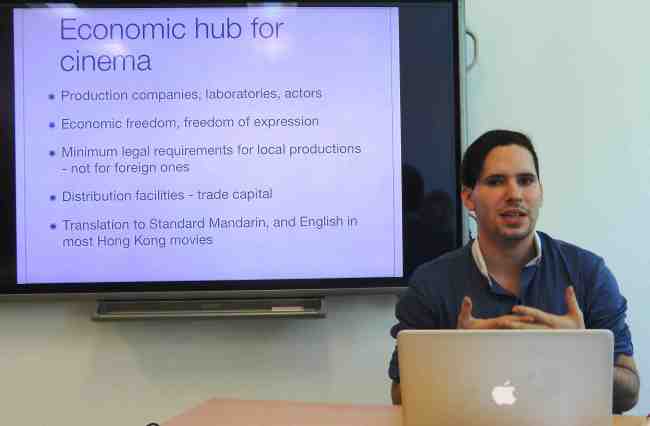Supported by the Department of Comparative Literature of the University of Hong Kong, 城邦/Chéngbāng/Polis was held by undergraduate students on May 31, 2013 as a symposium on the creative arts in Hong Kong. The symposium was divided into a total of three panel sessions with different art-related themes, as well as two plenary speaker sessions at the middle. Throughout the day, each speaker gave their distinctive personal insight regarding art and culture in various perspectives which made the event fruitful.
Panel Session 1- Looking Forward, Writing Back: Postcolonial Perspectives
Serene Chan- Postcolonial Awareness: an analysis of two Canto-pop songs
The very first panel session was started by Serene Chan on the topic of postcolonialism. In her presentation, two Cantonese pop-songs “Wedding Card Street” (囍帖街) and “Pig Cage Market” (豬籠墟事變) were chosen as examples to illustrate the theme.
Both selected songs portray the distinctive local characteristics of certain traditional places in Hong Kong. “Wedding Card Street” packages the redevelopment of Lee Tung Street, known as Wedding Card Street, as a love story about letting a past lover go. The distinctive features of that street are presented throughout the song by the recurred, surreal, as well as realistic images in the lyrics. For “Pig Cage Market”, it presents the characteristics of wet markets in Hong Kong by an array of visual, olfactory, tactile and audio images throughout the lyrics, and simultaneously puts forward the theme of the gradual elimination of wet markets in Hong Kong due to the rise of supermarkets.
By presenting the two songs, Chan pointed out the concepts of embedded coloniality and neo-colonizing forces. Through musicality, the resistance towards embedded coloniality is conveyed. When she was asked of how the change of city helps people understand art and culture in Hong Kong, Chan commented that cultural products such as songs and films are useful to comprehend people’s reactions towards post-colonial changes, as well as the identity and mentality embedded in the space.













